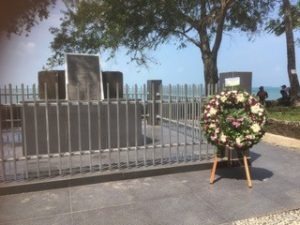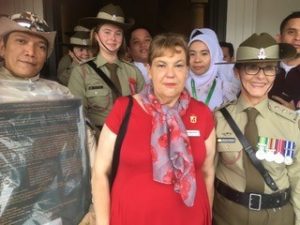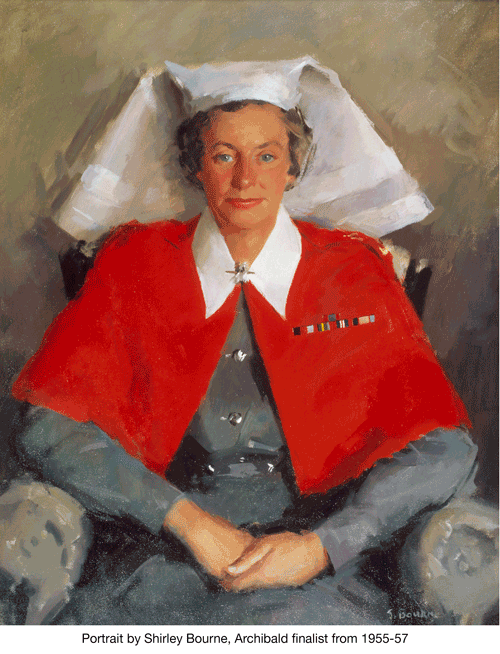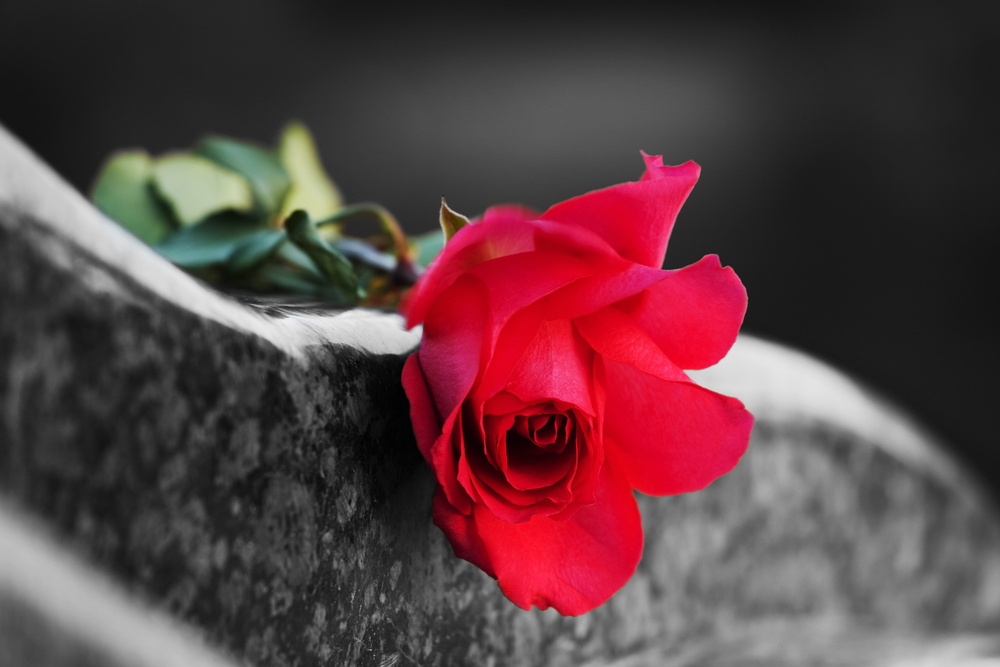On 16 February 1942, 21 Australian Nurses who dedicated their lives to helping others were murdered in the horrific Banka Island Massacre. The nurses washed ashore on the Island after the ship they were travelling on, the SS Vyner Brooke, was sunk off the coast of Indonesia by Japanese aircraft. After surrendering, the nurses were ordered to walk into the sea at Radji Beach and machine-gunned from behind. The only survivor was Lieutenant Colonel Vivian Bullwinkel AO, MBE, ARRC, ED, FNM, a 26-year-old nurse whose heroics and decorated post-war nursing career are being memorialised with a proposed sculpture at the Australian War Memorial.
To mark the 79th anniversary of the massacre, we spoke to Arlene Bennet, President of the Australian Nurses Memorial Centre, to discover the domestic and international memorials which have taken place in recent years to honour the legacy of the fallen nurses and Vivian.

The Australian Nurses Memorial Centre
The establishment of the Australian Nurses Memorial (ANMC) in Melbourne in 1950 was one of the first tributes to the heroism and sacrifice of Australian nurses who gave their life or spent years in Japanese prisoner-of-war camps during the Second World War.
The ANMC came about in discussions between Vivian, Betty Jeffry and Beryl Woodbridge, when the trio of nurses were prisoners of war together in Sumatra.
“When they were in the prisoner of war camp, they used to think about how they could memorialise their fallen colleagues,” Arlene says.
“12 nurses were killed at the bombing of their ship, 21 were massacred on the beach, and eight more died in prison camps. Vivian, Betty and Beryl, didn’t just want a stone edifice; they wanted something that was tangible and would help nurses.”
“Meanwhile, there were moves at home to set the train in motion to establish a nurses memorial centre. Edith Hughes Jones lost her deputy matron on the Centaur (which was a hospital ship which was bombed off Queensland) and had already started fundraising.”
Banka Island memorial services
In addition to the domestic memorials, victims have also been honoured on Banka Island in Indonesia.
“Since 2017, I have gone to Banka Island each year to mark the anniversary by attending various commemoration ceremonies,” Arlene says.
“The services are held at various memorials located on the Island, including the Nurses Memorial, which Vivian unveiled in 1993. After the services, we go down to the beach and walk into the water in a walk of humanity, just as the nurses did all those years before.”

Attending these memorials has led Arlene to developing friendship with the families of these nurses, and even speaks at the proceedings.
“On the 75th anniversary of the massacre, I went to Banka Island and met many of the family members of nurses who were killed on the day,” she says.
“I think it is really nice that we all stick together, and they certainly appreciate the involvement of the ANMC.”
Arlene adds, “I spoke about what had happened to the nurses and then read some excerpts from a letter from Clarice Halligan {one of the nurses who was massacred}. It was pretty emotional to read that out, I can tell you.”
She also highlighted a particularly special moment from last year’s ceremony on Banka Island.
“Last year, we had a member of the Japanese Embassy in Jakarta join us for the anniversary,” she says.
“He was very respectful, and it was quite an emotional time; he reached out with his hand during the walk into the water.”
Unfortunately, due to the COVID-19 pandemic, Arlene and the families are unable to travel to Banka Island this year. However, she will be participating in a special Zoom meeting on the anniversary date to ensure the legacy of the nurses continues to be remembered.
Honouring a great Australian nursing leader
Sister Vivian Bullwinkel remarkably survived the Banka Island massacre and went on to become a prisoner of war until the end of the war in 1945. Her legacy lives on to this day with the (in principle) agreement of the Australian War Memorial to locate a commemorative sculpture of Vivian in their grounds.
“Of the 22 nurses, Vivian was the only survivor and was shot but received no injuries to her internal organs” Arlene says.
“She then came ashore and went into the jungle where a voice called to her. This was in fact an injured English private who she looked after for 12 days. When he lay dying in the prison camp, she sat there holding his hand, so she was still being a nurse.”
“She told her story to the nurses in the camp only once and they had a very strong bond thereafter. She was very quiet in the camp which had terrible conditions such as tropical disease and starvation.”

After the war, Vivian went on to have a remarkable impact on the Australian nursing profession up until her death in 2000, aged 84.
“Eventually, after she returned home and recovered, she visited the families of everybody who died in the massacre and sent them Christmas cards every year,” Arlene says.
“She could have gone really quiet and not been known, but she went on to do great things in nursing. Her involvement in the Australian College of Nursing was remarkable and she was the Director of Nursing at the Fairfield Infectious Disease Hospital in Melbourne.”
“In the 1970s she was put in charge of operation Babylift and the last group of orphans to the leave Vietnam War was at her behest. She truly was an amazing woman.”
By Rory O’Sullivan
ACN Communications Officer
Would you like to help honour the legacy of Lieutenant Colonel Vivian Bullwinkel AO, MBE, ARRC, ED, FNM and those who died in the Banka Island massacre? The ACN Foundation needs your support to help erect a statue of Vivian in the grounds of the Australian War Memorial. Learn how you can contribute to the project here.





